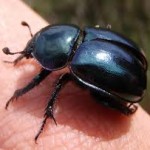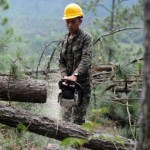Naval Force and Defence sector are the major sectors defining the growth and development of a nation-state. It is needless to describe how important these sectors to a nation’s security, integrity and prosperity. Billions of rupees are allocated every year for the advancement of these sectors.
Global presence and the increased operating tempo of naval forces greatly increase the chances of encountering pests that transmit pathogens, infest food supplies, damage electronic devices or simply present a nuisance to crew members. These pests are prone to inhabit certain areas, making continual monitoring important for the following spaces:
- Food service areas.
- Sculleries.
- Mess Decks.
- Ship’s stores (e.g., soda storage areas).
- Snack areas.
- Heads and showers.
- Dry provision storage areas.
- Berthing areas.
- Laundry and dry-cleaning shops.
- Cleaning gear locker.
- Garbage collection areas.
- Electrical devices.
- Junction box.
Insects like ants, cockroach, beetles, bedbugs etc. are the most commonly  encountered pest aboard Navy ships. They contaminate food and food preparation areas and lower crew morale. The construction characteristic of navy vessels makes pest control very difficult. Abundant standing water, food, warmth, and numerous potential harborages provide the pests with an ideal habitat for growth and survival.
encountered pest aboard Navy ships. They contaminate food and food preparation areas and lower crew morale. The construction characteristic of navy vessels makes pest control very difficult. Abundant standing water, food, warmth, and numerous potential harborages provide the pests with an ideal habitat for growth and survival.
These pests require food, water, and harborage for the growth and survival. Their habits and body structure enable them to potentially transmit pathogens that cause dysentery and diarrhea. Their flattened body enables them to hide in tight places that are warm and dark. Infestations are most likely to be in and around:
- Steam lines.
- Cable bundles
- Berthing
- False bulkheads, overheads, and splash boards.
- Lagging and torn insulation.
- Behind pictures and bulletin boards.
- Around holes for plumbing and electrical lines.
- Behind drawers.
- Around iron supports counters and serving lines.
- In hollow furniture and utility legs (e.g., refrigeration and heavy equipment support).
- Oncoming food stores (e.g., bagged onions, potatoes), soft drink containers, and cardboard containers.
- Ovens and oven hoods.
- Motor housings, esp., in refrigeration units, ice cream machines.
Not only insects but rodents are also a threat to defence forces. There are several incidences that show how defence sector faces problem due to these pests:
- Navy SNAFU: Some Things Don’t Change
April 03, 2009, Sodahead.com, US
A senior official at the weapons station, who asked not to be identified, said the problem began when a squirrel came in contact with an electrical transformer. The rodent was electrocuted and the transformer exploded, knocking out power for a time, and seriously damaging a key component of the base phone system.
- Honduran army goes to war against invading bugs
By Noe Leiva, December 3, 2015, Phys Org, Honduras
A tree-munching bug called Dentroctomus frontalis, more commonly known in  North and Central America as the southern pine beetle.
North and Central America as the southern pine beetle.
For Honduran soldiers from the First Artillery Battalion confronting the pine tree bugs in Zambrano province just north of the capital with chainsaws, much of that climate chatter is just theory and abstraction.
Commanders of the battalion of 350 men admit feeling impotent against the beetle, and have called in the country’s Forest Conservation Institute (ICF) and the military’s Forest Commando unit to help cut down infected trees, and healthy ones nearby.
“It’s a shame to see this,” one commando officer, Colonel Bernardo Avila, told AFP.
Below is the table that shows characteristics of some pests found aboard ship:
|
Insect |
Length of adult (mm) |
Days to devel-op |
Presence |
Common type of product attacked |
|
Saw-toothed grain beetle |
2-3 |
30-50 |
Very common |
Packaged cereals, crackers, dried fruits, candy, flour, meal, sugar, dried meat, tobacco, wide variety of grain products |
|
Merchant grain beetle |
2-3 |
30-50 |
Very common (Pacific region) |
Oatmeal, rice, flour, cake mixes, macaroni, cookies |
| Cigarette beetle, |
2-3 |
30-50 |
Very common |
Breakfast cereals, spices (esp., dry cocoa powder), raisins, rice, teas |
|
Confused flour beetle, |
3-4 |
30-120 |
Very common (health concern, if 3 or more/pound) |
Flour, other grain products, beans, peas, dried fruits, shelled nuts, spices, chocolate |
|
Mediterranean flour moth, |
10-14 |
30-40 |
Rare |
Flour, cereals, bran, biscuits, seeds, chocolate, dried fruits |
|
Indian meal moth, |
8-10 |
25-135 |
Very common (esp., in vending machine areas) |
Flour, corn, cornmeal, dried fruits, nuts, powdered milk, crackers, biscuits, chocolate, dried red peppers, dried flowers |
|
Varied carpet beetle, |
2-3 |
1 generation /year |
Common (health concern, demisted species, if 1 or more larvae/lot) |
Grain products, woolens, silks, feathers, products of animal origin, rodent nests, dead insects |
|
Rice weevil |
2-4 |
30-50 |
Very common |
Pasta, rice, raw grains, nuts, fruits |
|
Spider beetles |
2-3 |
90-300 |
Rare |
Broken grain, seeds, dried fruits and meats, woolens and dried animal products, rat and mouse droppings |
SOURCE: US NAVY SBPC MANUAL
Use of pesticides and insecticides is not an effective method to prevent and control these damages as their effect remains only over a certain period of time. These insecticides and pesticides are toxic in nature. The fumes evaporated from them can cause severe brain damage. They kill the target species as well as beneficial non-target species.
C Tech Corporation can offer a solution to overcome this problem. Our product Combirepel™ is an extremely low toxicity and extremely low hazard and eco-friendly rodent aversive. Combirepel™ is available in the form of solid masterbatches, liquid concentrate and in lacquer form. The product is compliant with RoHS, RoHS2, and REACH and is FIFRA exempted. This product acts through a series of highly developed intricate mechanism ensuring that rodents are kept away from the target application.
The fencing and tree guards can be coated withCombirepel™ to protect the trees, shrubs etc. from the damage caused by the grey squirrels. The product can also be incorporated into agricultural films, greenhouse films, plastic mulches used on a large scale in the agriculture as well as horticulture sector in order to avoid damages caused by these squirrels to fruits and vegetables. Also, the products can be directly incorporated in the polymer matrix during processing of pipes and tubing. Combirepel™ does not leach out, thus there is no soil pollution. Groundwater reserves are also not polluted. Also the non-target beneficial species like earthworms, bees etc are not affected.
The product is compliant with ROHS, ROHS2, ISO, REACH, APVMA, NEA, EU-BPR, and FIFRA exempted.
Contact us at technical.marketing@ctechcorporation.com if you’re facing problems with rodents and get best remedies to combat the pest menace.
Also, visit our websites:
http://www.ctechcorporation.com/
http://www.rodrepel.com/
http://www.termirepel.com/
http://www.combirepel.com/
Follow our Facebook pages at:
1] https://www.facebook.com/Combirepel-411710912249274/
2] https://www.facebook.com/Termirepel-104225413091251/
3] https://www.facebook.com/Rodrepel-120734974768048/
Follow us on our Twitter pages at:
1] https://twitter.com/rodrepel
2] https://twitter.com/termirepel
3] https://twitter.com/combirepel
